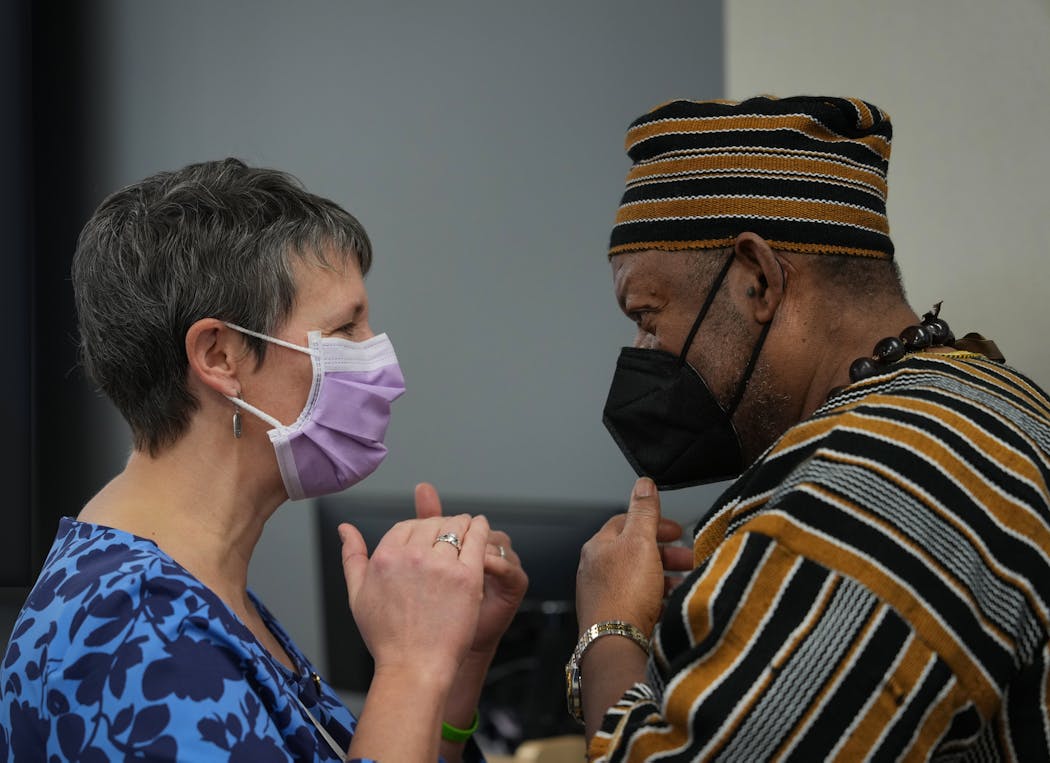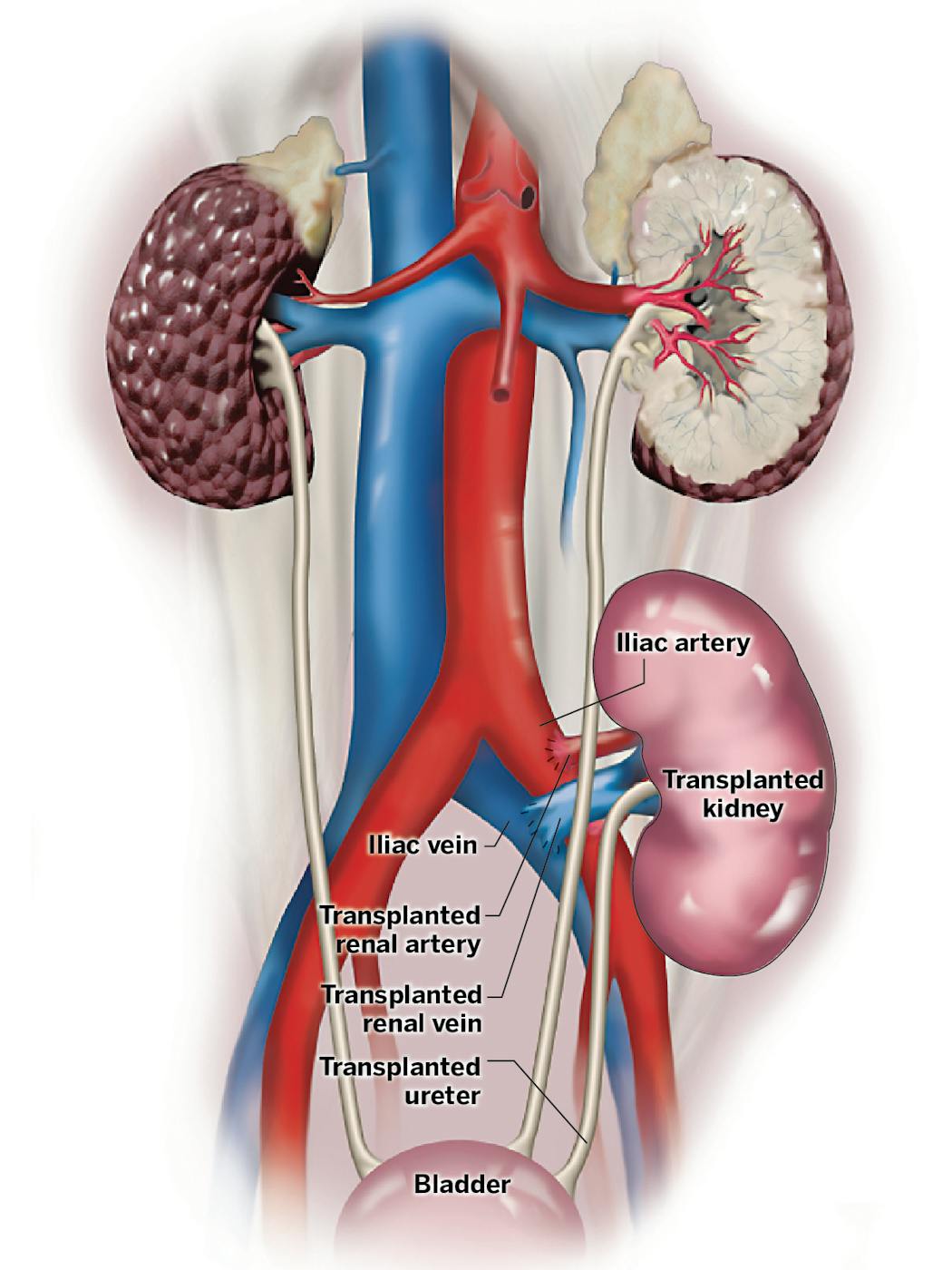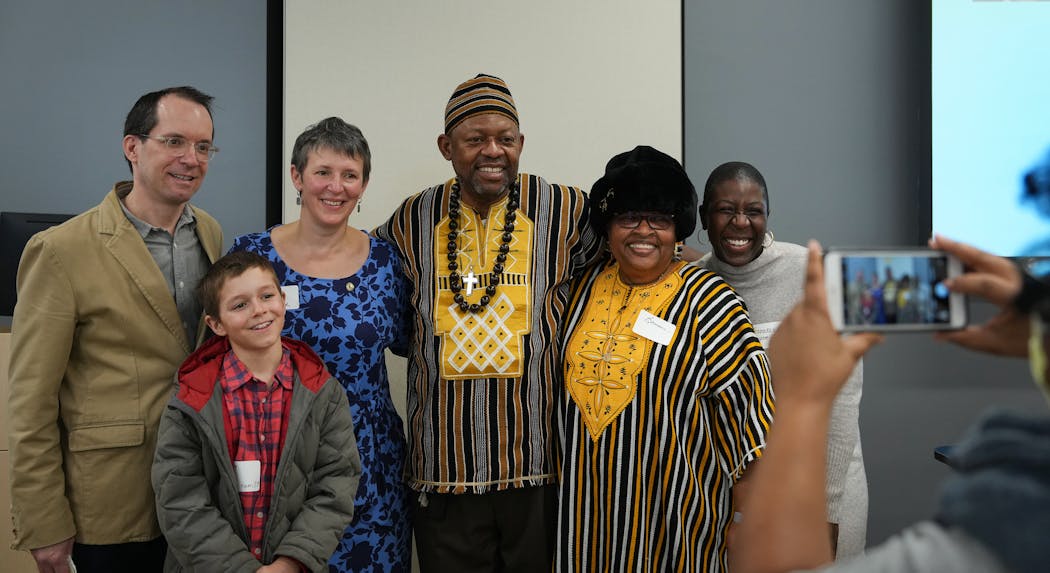A handful of bewildered friends questioned my decision to donate a kidney to someone I didn't know.
The simple answer: Why not? A healthy person can get by with just one kidney, and the other one can be of greater use to someone whose health and general wellbeing have eroded as their kidneys failed. I'm happy to share the wealth.
As it says in the gospel of Luke: "Every one to whom much is given, of him will be much required."
And I've been given much.
In January 2021, I clicked a link on the webpage for HCMC, where I have worked as a nurse for almost 10 years. This notified the Kidney Center that I was interested in being a living organ donor.
The next day, I got an email asking me to come in for a blood type and screen. Later that week, I had my blood drawn. I liked the Kidney Center coordinator, Jenny Bodner, immediately. I asked how long it might be before they found a match, and her answer stunned me: If I were approved as a nondirected donor — meaning my kidney could go to anyone — "You could pick the date."
You read that right: The need is so dire, with about 89,000 people waiting for a kidney transplant in the U.S., a living donor can pick the date for surgery, and a recipient will be found.
This path began for me much earlier than January 2021. About 20 years ago, a former classmate mentioned that she'd had surgery to donate a kidney. This blew my mind. It was the first I'd heard of a living kidney donation outside of, say, a person donating to their child or other close relative. Years later, I mentioned the idea to my roommate, then a nurse at the University of Minnesota. She brought home from work an info packet — complete with a VHS tape — about kidney donation. I kept ruminating.
In 2007, I had my first son in the midwife unit at HCMC, the flagship hospital of the Hennepin Healthcare system. My experience was so positive, so transformative, it made me want to work at the hospital. Over the next few years, I got my nursing license, had another son and started working at HCMC right out of nursing school.
My job in pediatrics brought me into contact with LifeSource, the nonprofit that handles most organ procurement in Minnesota, the Dakotas and western Wisconsin. When the families of pediatric patients who die decide in favor of organ, tissue or corneal donation, LifeSource handles the process. The staff's grace and skill in this work impressed me. I wrote a review of "When Death Becomes Life," a fantastic book about transplant surgeries, and a commentary piece for the Star Tribune, promoting organ donation. One of my hospital colleagues donated a kidney to her father, with great results for both. I ran into a former mentor who had donated a kidney to her husband.
Everything I learned nudged me toward action.
Fast forward to the pandemic, when the pediatrics unit started taking care of adults to help other units that were full. When I had two patients — one in his 20s and one in her 30s — who needed transplants, I witnessed how failing kidneys begin to dictate a life. Schedules are forever on hold — waiting to feel better with a round of dialysis, waiting to be well enough to be on the transplant list, waiting for a donor match.
As the pandemic wore on, my 50th birthday loomed. In that somewhat cliché way we take stock of ourselves at milestones, I yearned to do something.
It was a perfect time to donate a kidney.
After my first blood test in January, Jenny, the Kidney Center coordinator, brought my case to the kidney donation team, an interdisciplinary group of doctors and other health care experts who meet every Friday to discuss potential donors.
I had meetings with a social worker, a chaplain and a psychologist, who each used their unique lens to evaluate my understanding, motivation and expectations of the process. I turned 50 in February 2021 and focused on staying in top health to be ready: Got a mammogram. Got my teeth cleaned. Had my first colonoscopy. Check, check, check.
I wanted my parents' blessing for this decision. My dad had worked in a hospital for most of his career, starting as a lab tech and working his way up to administration, and knows a fair amount about labs and blood and transplants. His immediate response to my transplant plan was: "Cool!"
My mom is more of a worrier, but to my utter amazement, she didn't bat an eye, because none of this was new. Her friend had donated a kidney to her husband — and both were doing well. In addition, a character on "The Bold and the Beautiful" had undergone a kidney transplant. I'm no fan, but if a daytime soap opera raises awareness about a lifesaving medical treatment, color me impressed.
Another family connection was never far from mind. My husband's grandfather, Dr. Richard L. Varco, was a surgery pioneer at the University of Minnesota, where he started to work in the 1940s. He and such colleagues as Drs. C. Walton Lillehei and F. John Lewis had the passion, will and sheer grit to carry out some of the first transplants, which had huge rates of both failure and risk for rejection. Their painstaking work, combined with the trust of the patients and families who agreed to those early experimental surgeries, are what made it possible for me to even consider what I was facing: a two-hour surgery that by now has become routine.
A big part of the screening process is lab day, which involves many, many fasting blood tests as well as a 24-hour collection of urine, which needs to be kept cool. For this task, the kidney program provides clear directions, lots of gloves and a really large, covered container. When I arrived at the hospital for a packed day, my first stop was the laboratory, where I dropped off the vat of urine and had my blood drawn.
I met next with a dietitian. Having had celiac disease for five years and being a vegetarian for more than 30, I am no stranger to ingredient lists and dietary restrictions. Fortunately, my produce-heavy, lower-protein menu is extremely healthy for kidneys.
Would my diet have to change after surgery? Nope. And, as concerned pals would ask: Could I still drink wine and coffee? A resounding yes.
The only specific restriction for me after surgery involved NSAIDs — nonsteroidal anti-inflammatory drugs — like ibuprofen. They can interfere with blood flow to the kidneys, so they are discouraged after kidney donation.
Later on lab day, I had an electrocardiogram, or ECG, in which electrodes are placed across your chest and limbs to evaluate heart function. I met with a nephrologist, or kidney specialist, to discuss the risks of donation and how to achieve optimum kidney health post-donation. (The short answer: Drink lots of water.) I had a computed tomography (CT) scan of my kidneys to search for any stones or a large discrepancy in the sizes of my kidneys, which can indicate a problem.
Extensive, repetitive testing of the donor is done to ensure surgery won't endanger a healthy patient. In this quest, the transplant team leaves no stone unturned.
Though I worked hard to stay healthy, we still hit snags.
- I had a kidney stone. This prompted a meeting with a specialist and two more 24-hour urine tests, a week apart. In the end, the stone was so tiny, barely perceptible on my scans, that it wasn't a problem.
- The ECG found a potential irregularity. Meetings with a cardiologist and many tests over many months — stress test, CT, angiogram (study of the vessels in my heart) during which I took nitroglycerin — determined my heart was fine.
- I got COVID (for the third time), causing a two-month delay.
As rocker Tom Petty says, the waiting is the hardest part, but finally, after more than a year, my name was active on the list!
In quick succession, I was selected to be part of two chains — matches involving multiple donors and recipients — and almost just as fast, both fell apart. The second plan had progressed enough that a date was set, and I'd submitted paperwork for my leave and had more blood drawn. The week of the planned surgery, the other donor in the chain tested positive for COVID, so the whole thing was called off.
I considered waiting longer to be part of a chain but decided to pick a time frame that worked and let the transplant program find one suitable match from within HCMC's patient ranks. We set a date: July 14, Bastille Day.
I went in for more cross-matching, more screening and another COVID test. The match held. The theoretical was becoming real.
The night before the surgery, I fasted from midnight on and took laxatives before bed — a regimen not nearly as rigorous as colonoscopy prep. My husband escorted me to the hospital at 5:30 a.m. The nurse who took care of me in pre-op knew the drill: She'd donated a kidney to her brother more than a decade earlier.
In my fashionable hospital gown and puffy blue surgical cap, I was rolled to a bay outside the operating room. The last person I remember talking to is Dr. Paul Stahler, the lead surgeon with whom I'd met several times. After getting my written consent for surgery, he leaned over the gurney, took my hand, and said: "We're going to take really good care of you."
I remember being rolled into the blindingly bright operating room. Next thing I knew, I was in post-op. In this area just outside the operating room, nurses monitor you closely as the anesthesia wears off and make sure you can swallow safely. I texted my family as soon as I was awake and told them it was over, and I was fine.
For the pharmacists or medication-curious out there: I had been given propofol, midazolam and fentanyl for pain and sedation. I was intubated. During the surgery, I got lidocaine (local anesthetic), bupivacaine (nerve block), rocuronium (paralytic), cefazolin (antibiotic to prevent infection), ondansetron (antinausea), dexamethasone (anti-inflammatory), loads of IV fluids and a few other meds that help control overall fluid balance and blood pressure. I know all this only by the medication list in my "after visit summary." My estimated blood loss was 50 ml, or a little more than 3 tablespoons.
I felt great. The nerve block fully lived up to its name. Dr. Stahler had warned me of shoulder pain, and he hit the nail on the head. During the surgery, carbon dioxide is blown into the abdominal cavity to create space for the surgeons to work. After the area is sewn shut, the air can cause gas pain in the abdomen or shoulder. My shoulder pain never got worse than a 4 on the hospital pain scale of 0 to 10, and it was gone within two days.
I had two small dressings over stitched incisions. One cut, from which the kidney was removed, was 2 inches long and was camouflaged by a horizontal crease on my lower abdomen. The other incision, a 1-inch vertical cut that started at my belly button, was where a medication port had been placed. I also had four Band-Aids over tiny holes used to insert a camera, tools and to blow in CO2.
I quickly moved on from liquids to a full meal at dinner — I was starving! I had slight nausea — probably related to the IV pain meds. I had a catheter in for 24 hours, and I put out a huge amount of clear urine, thanks to all the IV fluids.
Sarah Schuh, the Kidney Center's social worker, stopped by with a message from my recipient's family. She said they were "exploding" with excitement and begged her to take them to my room to meet me. She had to remind them that protocol calls for a six-month wait before recipient and donor could learn each other's identity, if both are willing. Knowing she couldn't give me any details, I asked for an update anyway. When she said carefully, "I can't verbally tell you anything about the patient," her beaming face and two thumbs-up told me all I needed to know.
Steve Grove, hospital chaplain and living donor advocate, also stopped by to check in. "No matter how long that person lives," he said of my kidney's recipient, "they will spend the rest of their life knowing that someone loved enough and cared enough to do this for them."
After surgery, I faced strict lifting restrictions for a minimum of three to four weeks. I took six weeks off, which took me to the end of August — not a bad time for forced leisure. My first shifts back at the hospital were rough. We were busy, I was tired, I felt rusty. When my three 12-hour overnight weekend shifts were over, I got home and slept hard. I woke up that afternoon to a large manila envelope in my mailbox. It was a letter from the recipient, sent via Sarah the social worker.
The man who had one of my kidneys sewn into him had typed a page-long letter about his family's gratitude and how much he had improved overnight — "like night and day!" He told me he felt better than he had in years, and he hoped to meet me, if I was willing.
The six-month mark after our surgeries fell close to the 60th anniversary of the hospital's kidney transplantation program. HCMC asked if we would be a part of the celebration. To be frank, I wasn't crazy about meeting the recipient for the first time in front of an audience, but I needn't have worried. The moment William "Henry" Byrd and I made eye contact and then landed in a bear hug, the crowd didn't matter.
The inconveniences for a kidney donor — poking, prodding, testing, waiting — pale when compared to the stress of waiting for a kidney donor, living or deceased. If and when a cadaver kidney becomes available, a potential recipient may be given as little as an hour to respond. If that patient can't report to the hospital in a timely manner, the next person on the waiting list is called. What would that kind of pressure do to your social life? Your love life? Your mobility? Your sanity?
Despite the odds and hurdles, the U.S. reached its millionth organ transplant in 2022. A new record was set, with more than 25,000 kidney transplants done within a year — each transplant part of a huge, intricate puzzle.
It was a privilege for me to be a tiny piece of that puzzle.
Kelly Maynard has been a nurse at HCMC since 2013. She works part time on the Star Tribune sports copy desk.





